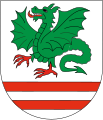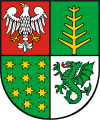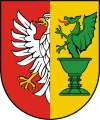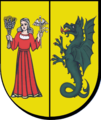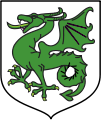
The Masovian Voivodeship, also known as the Mazovia Province, is a voivodeship (province) in east-central Poland, with its capital located in the city of Warsaw, which also serves as the capital of the country. The voivodeship has an area of 35,579 square kilometres (13,737 sq mi) and, as of 2019, a population of 5,411,446, making it the largest and most populated voivodeship of Poland. Its principal cities are Warsaw in the centre of the Warsaw metropolitan area, Radom (212,230) in the south, Płock (119,709) in the west, Siedlce (77,990) in the east, and Ostrołęka (52,071) in the north.

Janusz I of Warsaw, also known as Janusz I the Old, was a Polish prince member of the House of Piast in the Masovian branch, from 1373/74 Duke of Warsaw and after the division of the paternal inheritance between him and his brother in 1381, ruler over Nur, Łomża, Liw, Ciechanów, Wyszogród and Zakroczym. In addition, he was a vassal of the Polish Kingdom since 1391 for the fief of Podlachia.

Duchy of Masovia was a district principality and a fiefdom of the Kingdom of Poland, existing during the Middle Ages. The state was centered in Mazovia in the northeastern Kingdom of Poland, and during its existence, its capital was located in the Płock, Czersk and Warsaw. It was formed in 1138 from the territories of the Kingdom of Poland, following its fragmentation, that was started by the testament of Bolesław III Wrymouth. The country existed in the years: 1138–1275, 1294–1310, 1370–1381, and 1495–1526, between that time, going through fragmentations of its territory into smaller duchies and its unification. The states formed during its fragmentation were duchies of Kuyavia, Dobrzyń, Czersk, Płock, Warsaw, Rawa and Belz. In 1526, the country was incorporated into the Kingdom of Poland.

Konrad III Rudy, also known in English as Konrad the Red, was a Polish prince and member of the Piast dynasty in the Masovian branch. He was a duke of Czersk, Liw, Warsaw, Nur, Łomża, Ciechanów, Różan, Zakroczym and Wyszogród during 1454-1471 jointly with his brothers, Duke of Płock, Wizna, Płońsk and Zawkrze during 1462-1471, and after the division of the paternal domains in 1471, sole ruler over Czersk and Liw, over Wyszogród during 1474-1489 and again in 1495, over Zakroczym since 1484, over Nur since 1488 and over Warsaw since 1489.
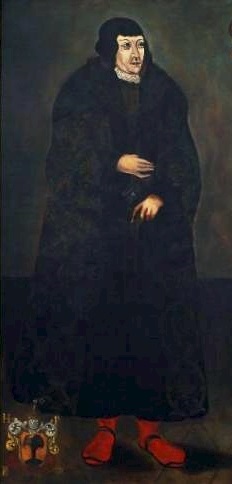
Stanisław of Masovia, was a Polish prince member of the House of Piast in the Masovian branch. He was a Duke of Czersk, Warsaw, Liw, Zakroczym and Nur during 1503-1524 jointly with his brother.
Danutė of Lithuania, was a Lithuanian princess of the Gediminid dynasty and by marriage Duchess of Warsaw.
This is a list of coats of arms of Poland.

Czersk is a settlement in the administrative district of Gmina Góra Kalwaria, within Piaseczno County, Masovian Voivodeship, in east-central Poland. It lies approximately 2 kilometres (1 mi) south-east of Góra Kalwaria, 19 km (12 mi) south-east of Piaseczno, and 33 km (21 mi) south-east of Warsaw. The village also lies on the Czersk Lake, which is an oxbow lake of the Vistula.

Siemowit II of Rawa, was a Polish prince member of the House of Piast, Duke of Warsaw and Liw during 1310-1313, after a new division with his brothers since 1313 ruler over Rawa Mazowiecka, Sochaczew, Zakroczym, Gostynin, Ciechanów and Wizna, regent of Płock during 1336–1340.

Trojden I was a Polish prince, Duke of Czersk from 1310, ruler over Warsaw and Liw from 1313, and regent of Płock in the years 1336–1340. He was a member of the House of Piast.
Sophia of Masovia was a Princess of Masovia, daughter of Konrad III Rudy, Duke of Masovia and his wife Anna Radziwiłł. She was a member of the House of Piast.

The Duchy of Płock was a feudal district duchy in Masovia, centered on the Płock Land. Its capital was Płock. It existed in the High Middle Ages era, from 1275 to 1294, from 1310 to 1351, and from 1381 to 1462.
Konrad Januszowic, was a Polish prince member of the House of Piast.
Bolesław Januszowic, was a Polish prince member of the House of Piast.
Catherine of Masovia was a Polish princess member of the House of Piast in the Masovian branch.

The Duchy of Czersk was a feudal district duchy in Masovia, centered on the Czersk Land. Its capital was Czersk.

The Duchy of Warsaw was a feudal district duchy in Masovia, centered on the Warsaw Land. Its capital was Warsaw.

The Duchy of Rawa was a feudal district duchy in Masovia, centered on the Rawa Land. Its capital was Rawa. It existed during the High Middle Ages era, from 1313 to 1370, and from 1381 to 1442.

The flag of the Masovian Voivodeship, Poland is a red rectangle with silver (white) eagle, with golden (yellow) beak and legs, located on the left side of the flag.
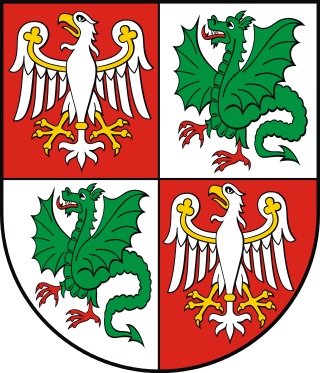
The coat of arms and the flag that serve as the symbols of the Warsaw West County, Masovian Voivodeship, in east-central Poland.


